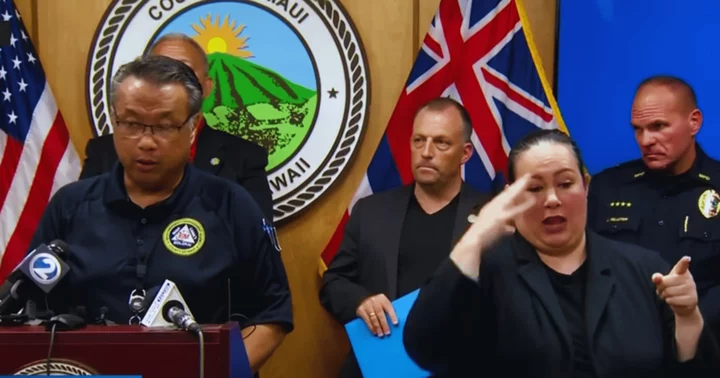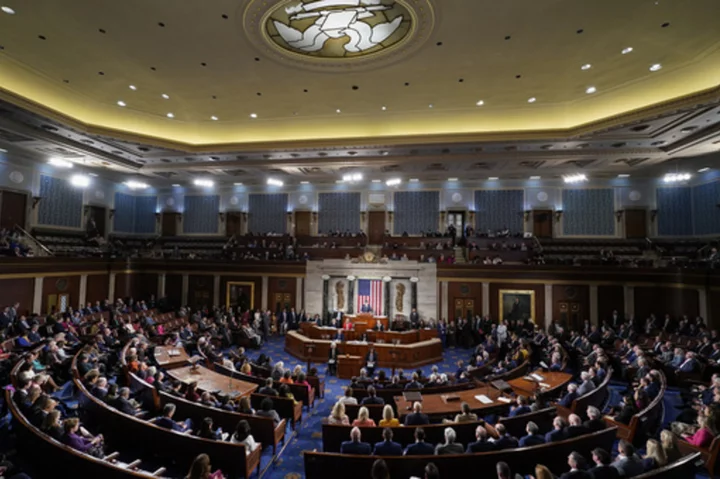MAUI, HAWAII: In a tragic turn of events, the deadliest wildfires the United States has witnessed in a century have devastated the island of Maui, Hawaii.
As the fires raged on, it emerged that the emergency officials responsible for responding to the disaster were attending a conference on another island.
This recently revealed information left many to question the handling of the Maui wildfires.
Where were Maui's top emergency officials when wildfires started?
The flames began their destructive journey on August 8. The Maui wildfires quickly consumed vast swathes of Maui island, particularly the town of Lahaina, leaving a trail of destruction and loss in their wake.
Shockingly, the very officials tasked with coordinating emergency responses were away at an annual conference on Oahu.
This revelation, confirmed by the Federal Emergency Management Agency (FEMA), has sparked outrage and raised serious concerns about the preparedness and effectiveness of the response.
Key figures from both the Maui and Hawaii emergency management agencies were attending FEMA's annual disaster meeting, a forum for disaster response planning.
With the officials away, the fires gained a foothold, leading to widespread evacuations and catastrophic damage.
Timely alerts and responses were hindered
The first spark of the catastrophe, known as the Upcounty Fire, ignited in the early hours of August 8. Despite early evacuation efforts around 6:40 am near Lahaina, the response call was delayed until 11 am.
The initial containment of the fire was reported at 9 am, but by 3.30 pm, the situation had escalated to the point of town-wide evacuations.
Hawaii's National Guard was deployed as the inferno threatened to consume more lives and property.
Tragically, the death toll has risen to at least 115, with over a thousand people still missing. The toll highlights the devastating consequences of a delayed response and inadequate preparedness measures.
As questions surround the efficiency of the response effort, criticisms have been aimed at both local and state officials.
The officials who were attending the conference in Waikiki were ultimately pulled into a coordinating call about the wildfires nearly five hours after they had begun.
This delay, along with the absence of key personnel, has stirred public anger.
John Mills, a spokesperson for FEMA, confirmed to Hawaii News Now that "there were consultations about the fires among local, state, and FEMA participants."
Among those present at the conference were Herman Andaya, then-director of the Maui County Emergency Management Agency, and Maj. Gen. Kenneth Hara of the Hawaii Emergency Management Agency.
However, questions remain about when they left the conference to address the unfolding disaster and who took charge in their absence.
Herman Andaya resigns citing 'health reasons'
As the criticism escalated, Herman Andaya resigned from his position citing "health reasons," fueling debates about his competence and qualifications for the role.
His decision not to activate emergency sirens, coupled with his lack of experience in emergency management, drew significant backlash.
Residents have voiced their frustration at the lack of warning and information dissemination.
Lynn Robinson, who lost her home in the fire, recounted to the New York Post, "There was no warning. There was absolutely none… We didn't see a fire truck or anybody."
Many in West Maui feel that the gravity of the situation wasn't communicated until it was too late.
While the cause of the fire remains unclear, a lawsuit has been filed against Hawaii's electric company, alleging negligence in failing to shut down their grid despite hazardous conditions.
Additionally, questions have arisen about the complacency of emergency preparedness experts, as some had considered the risk of wildfires to be low despite the significant damage caused by fires in 2018.
Amidst the chaos and devastation, residents are also criticizing the federal government's response, particularly FEMA's bureaucracy.
The promise of a paltry $700 one-time relief grant per household has sparked a wave of criticism against the Biden administration.









